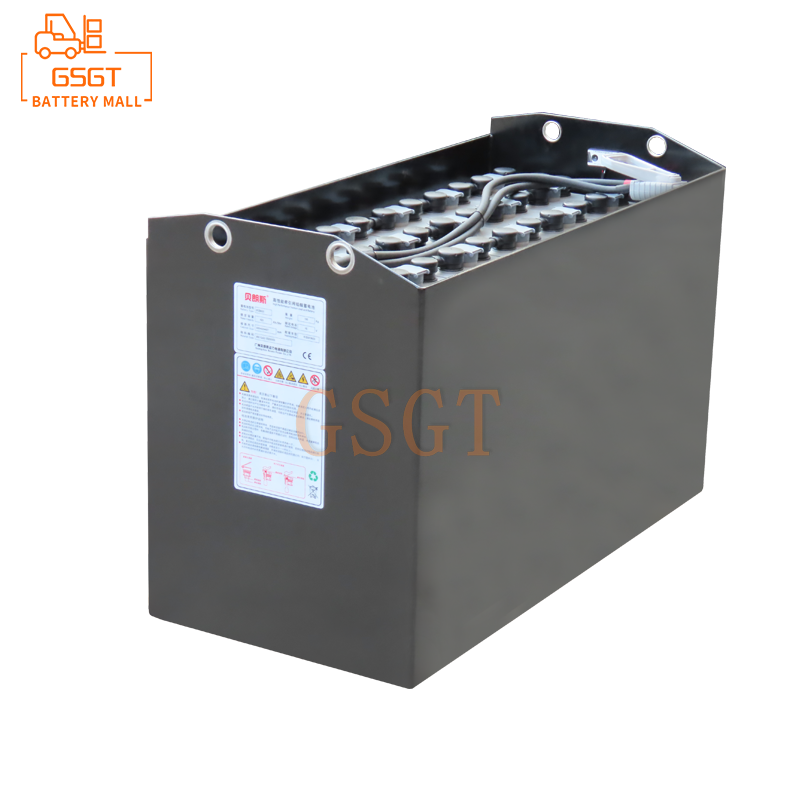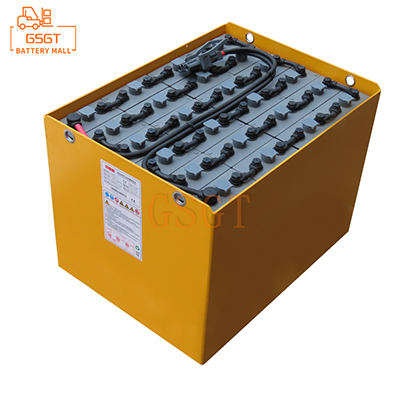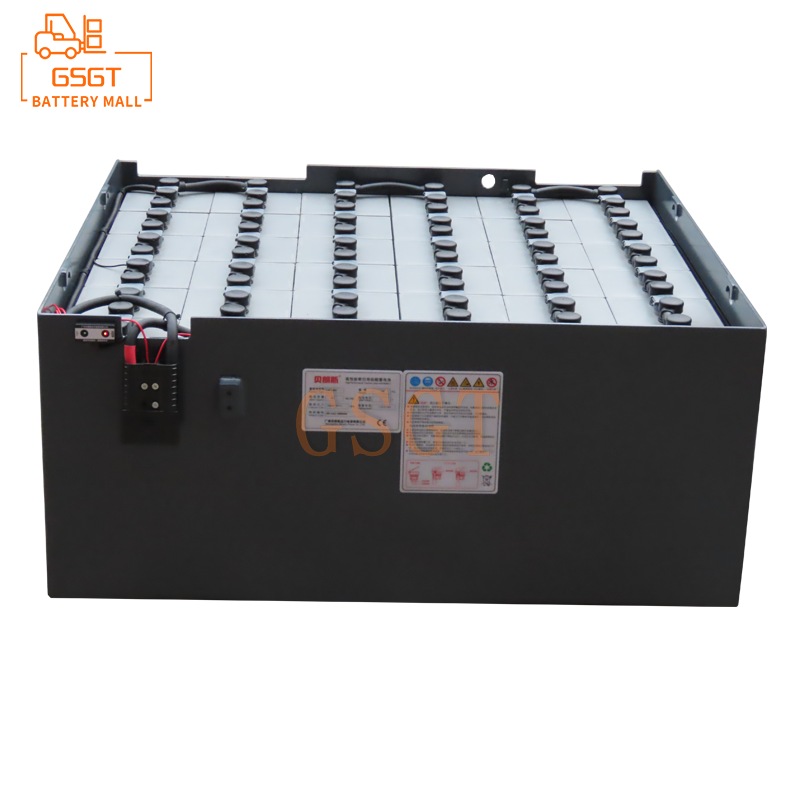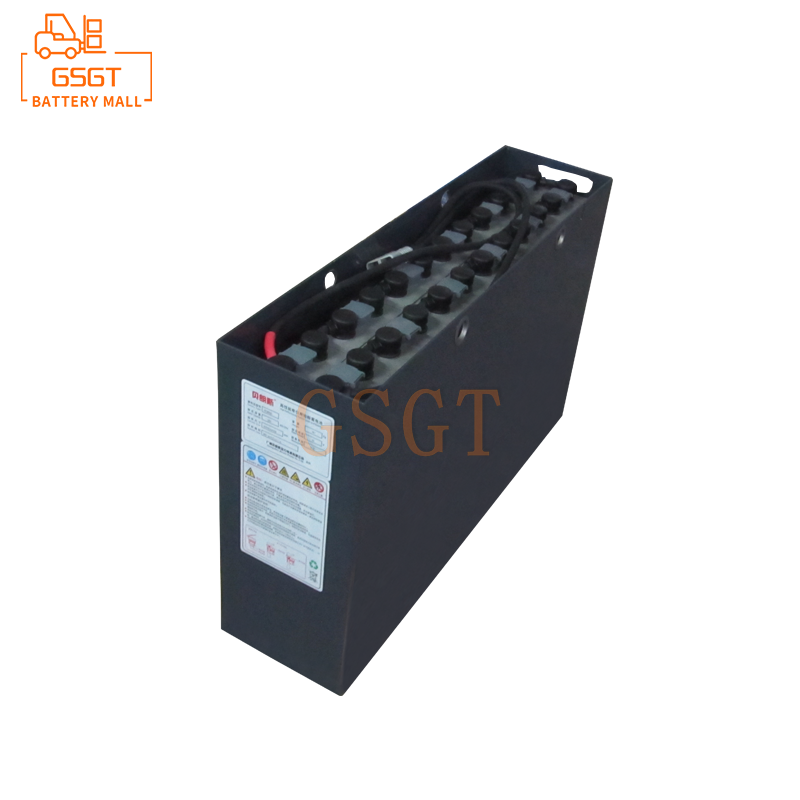Time:2025-05-10 15:18:30
Browse:600
Introduction
In modern logistics and industrial production, forklifts play a crucial role. As a common power source for forklifts, the stability of lead-acid batteries' performance is directly related to the working efficiency and operational safety of forklifts. However, in actual use, forklifts may encounter various extreme environments, such as high temperatures, low temperatures, and high humidity, etc. These harsh conditions can have a significant impact on the performance and lifespan of lead-acid batteries. Therefore, a thorough understanding of the response measures for forklift lead-acid batteries in extreme environments is of great significance for ensuring the normal operation of forklifts and improving production efficiency.
The influence of extreme environments on forklift lead-acid batteries
The influence of low-temperature environment
Battery capacity decline: The capacity of lead-acid batteries is extremely sensitive to temperature. In low-temperature environments, the rate of chemical reactions inside the battery significantly slows down. Generally speaking, when the ambient temperature is below 25℃, for every 1℃ drop in temperature, the battery capacity will decrease by approximately 1% to 2%. For instance, in the cold winter, when the ambient temperature drops below 0℃, the actual available capacity of the lead-acid battery in a forklift may decrease to 70% - 80% of that at normal temperature. This will significantly shorten the working time of the forklift and fail to meet the normal operation requirements.
Charging difficulty: Low temperatures not only reduce the battery's discharge capacity but also increase the difficulty of charging. Under low-temperature conditions, the resistance inside the battery increases, and the charger needs to output a higher voltage to charge the battery with electrical energy. At the same time, due to the slowdown of the chemical reaction rate, the battery's ability to accept charging will also decline, resulting in a significant extension of the charging time. For instance, a forklift lead-acid battery that may only take 6 to 8 hours to fully charge at normal temperature may take 10 to 12 hours or even longer in low-temperature environments, seriously affecting the efficiency of forklifts.
Risk of electrolyte freezing: The electrolyte of lead-acid batteries is composed of sulfuric acid and water. In low-temperature environments, the density of the electrolyte will change. When the temperature drops to a certain extent, there is a risk of the electrolyte freezing. Once the electrolyte freezes, its volume will expand, which may cause serious damage such as the battery casing cracking and the plates deforming, making the battery unusable and even leading to safety accidents.
The influence of high-temperature environments
Intensified evaporation of electrolyte: In high-temperature environments, the chemical reaction rate inside lead-acid batteries increases, and the water in the electrolyte evaporates rapidly. As the moisture content continuously decreases, the concentration of the electrolyte gradually increases. This not only affects the performance of the battery but may also lead to sulfation of the plates, shortening the battery's service life. For instance, during the hot summer, if a forklift operates for a long time in an outdoor high-temperature environment, the electrolyte level of the battery may drop significantly in a short period of time, and distilled water needs to be frequently added to maintain the normal level.
Shortened battery life: High temperatures accelerate the corrosion and aging process of battery plates. The active substances on the plates are more likely to fall off at high temperatures, resulting in a reduction in the effective area of the plates and a gradual decline in the capacity and performance of the battery. Studies show that when the ambient temperature exceeds 40℃, the lifespan of lead-acid batteries will be significantly shortened. For every 10℃ increase, the battery's lifespan may be halved. This means that for forklifts frequently used in high-temperature environments, their lead-acid batteries need to be replaced more often, increasing the usage cost.
Risk of overheating during charging: In high-temperature environments, batteries generate more heat during the charging process. If the heat is not dissipated in time, the battery temperature will continue to rise, causing overheating. Overheating not only further accelerates the aging and damage of batteries, but may also lead to serious safety accidents such as battery bulging, leakage, and even fire and explosion.
Countermeasures for forklift lead-acid batteries in extreme environments
Countermeasures in low-temperature environments
Increase the battery temperature
Indoor parking: Try to park the forklift in an indoor area where the temperature is maintained above 0℃. If there are a large number of forklifts, it is advisable to consider building a dedicated indoor parking garage and equip it with necessary heating facilities to maintain a stable indoor temperature. This can effectively reduce the impact of low temperatures on batteries, improve their performance and service life.
Use heating devices: For forklifts that cannot be parked indoors, dedicated heating devices such as heating pads and heating covers can be equipped for the batteries. These heating devices can heat the battery before the forklift starts or during parking, raising the battery temperature to an appropriate working range. The heating device should be equipped with a temperature control function to prevent excessive heating from causing damage to the battery.
Adjust the charging strategy
Increase the charging frequency: In low-temperature environments, the self-discharge rate of batteries will increase, so it is necessary to appropriately increase the charging frequency. When the battery discharge reaches 30% to 40%, it should be charged in time to avoid over-discharging. Meanwhile, each charging time can be appropriately extended to ensure that the battery can be fully charged.
Adopt low-temperature charging mode: Some advanced chargers are equipped with a low-temperature charging mode, which can automatically adjust the charging voltage and current according to the battery's temperature to enhance charging efficiency and safety. In low-temperature environments, chargers with low-temperature charging modes should be given priority to charge the lead-acid batteries of forklifts.
Check the electrolyte
Regularly check the liquid level: In a low-temperature environment, the liquid level of the electrolyte will change due to water evaporation and freezing, so it is necessary to regularly check the liquid level of the electrolyte. Generally speaking, check the electrolyte level at least once a week to ensure it is within the normal range. If the liquid level is too low, distilled water or a dedicated electrolyte replenishment solution should be added in time.
Check the density of the electrolyte: The density of the electrolyte also has a significant impact on battery performance. In low-temperature environments, the density of the electrolyte should be appropriately increased to lower its freezing point and prevent it from freezing. The density of the electrolyte can be checked regularly with a hydrometer and adjusted according to the actual situation. Generally speaking, the density of the electrolyte in winter should be slightly higher than that in summer.
Countermeasures in high-temperature environments
Reduce the battery temperature
Avoid direct sunlight: Try to park the forklift in a shady area or a place with shading facilities to prevent the battery from being directly exposed to the sun. If the forklift is operating outdoors, it is advisable to install a sunshade or use a sun cover for the forklift to reduce the exposure of sunlight to the battery and lower its temperature.
Enhance ventilation and heat dissipation: Ensure good ventilation in the forklift battery compartment. Fans or ventilation ducts can be installed inside the battery compartment to accelerate air circulation and promptly remove the heat generated by the battery. At the same time, it is necessary to regularly clean the debris and dust in the battery compartment to prevent the ventilation holes from being blocked and affecting the heat dissipation effect.
Optimize the charging process
Control the charging time and current: In high-temperature environments, the battery's charging acceptance capacity will increase. However, to prevent overheating during charging, the charging time and current should be appropriately controlled. To avoid prolonged high-current charging, you can adopt segmented charging or intelligent charging methods, which automatically adjust the charging parameters based on the battery's temperature and charging status.
Avoid charging during high-temperature periods: Try to avoid charging the battery at noon or other high-temperature times. Choose to charge it in the early morning or evening when the temperature is relatively lower to reduce the heat generated by the battery during the charging process.
Monitor the electrolyte
Increase the frequency of liquid level checks: Due to the intensified evaporation of the electrolyte in high-temperature environments, the frequency of liquid level checks should be increased, with the electrolyte level checked at least once a day. If the liquid level is found to be too low, distilled water should be added in time, but be careful not to add too much to avoid the electrolyte overflowing.
Preventing electrolyte deterioration: In high-temperature environments, the electrolyte is prone to deterioration, which can affect battery performance. Therefore, it is necessary to regularly check the color and odor of the electrolyte. If any abnormal color or strange smell of the electrolyte is found, it should be replaced in time.
Countermeasures in other extreme environments
High humidity environment
Moisture-proof measures: In a high-humidity environment, to prevent the battery from getting damp, desiccants such as silica gel desiccants can be placed in the battery compartment to absorb moisture from the air. At the same time, it is necessary to ensure that the battery compartment is well sealed to prevent rainwater or moisture from entering.
Check the electrical connections: A high-humidity environment can easily cause rust and corrosion at the electrical connection points of the battery, affecting its normal operation. Therefore, it is necessary to regularly inspect the battery terminals, cables and other electrical connection parts. If there is any rust or corrosion, it should be cleaned in time and protective grease should be applied to ensure good electrical connection.
Dusty environment
Dust protection: Install dust covers or filters on forklift batteries to prevent dust from entering the battery interior. Regularly clean the dust cover and filter to ensure their filtering effect. At the same time, keep the battery compartment clean to prevent dust from accumulating on the battery surface.
Regular maintenance: In dusty environments, the maintenance cycle of the battery should be appropriately shortened. Regularly inspect the appearance of the battery, clean the dust and debris on the battery surface to prevent dust from entering the battery and affecting its performance and lifespan.
Conclusion
Forklift lead-acid batteries face numerous challenges in extreme environments, such as reduced battery capacity, charging difficulties and the risk of electrolyte freezing due to low temperatures, accelerated electrolyte evaporation, shortened battery life and the risk of overheating during charging caused by high temperatures, as well as damage to the battery from high humidity and dusty environments. By taking a series of targeted countermeasures, such as raising the battery temperature, adjusting the charging strategy and inspecting the electrolyte in low-temperature environments, lowering the battery temperature, optimizing the charging process and monitoring the electrolyte in high-temperature environments, as well as doing a good job in moisture-proofing, dust-proofing and regular maintenance in high-humidity and dusty environments, the impact of extreme environments on forklift lead-acid batteries can be effectively reduced. Enhance the performance and service life of batteries to ensure that forklifts can operate normally and safely under various harsh conditions, providing a strong guarantee for the efficient operation of logistics and industrial production. In the actual usage process, users should flexibly apply these countermeasures based on the specific working environment and battery usage conditions, and constantly summarize experiences to achieve the best performance and economic benefits of forklift lead-acid batteries.

$2450

$3405

$4045

$1060

MESSAGE
Professional And Efficient
Security
Affordable Price
Professional Services